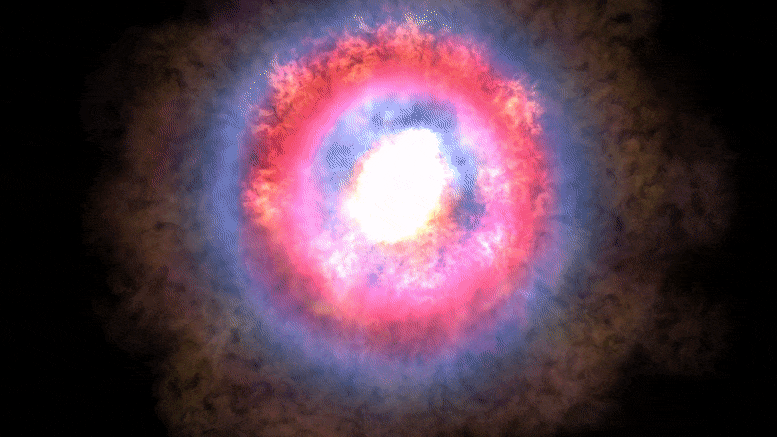A team led by astronomers at UC Santa Barbara have confirmed the existence of an elusive new type of supernova.
A worldwide team led by UC Santa Barbara scientists at Las Cumbres Observatory has discovered the first convincing evidence for a new type of stellar explosion — an electron-capture supernova. While they have been theorized for 40 years, real-world examples have been elusive. They are thought to arise from the explosions of massive super-asymptotic giant branch (SAGB) stars, for which there has also been scant evidence. The discovery, published in Nature Astronomy, also sheds new light on the thousand-year mystery of the supernova from A.D. 1054 that was visible all over the world in the daytime, before eventually becoming the Crab Nebula.
Historically, supernovae have fallen into two main types: thermonuclear and iron-core collapse. A thermonuclear supernova is the explosion of a white dwarf star after it gains matter in a binary star system. These white dwarfs are the dense cores of ash that remain after a low-mass star (one up to about 8 times the mass of the sun) reaches the end of its life. An iron core-collapse supernova occurs when a massive star — one more than about 10 times the mass of the sun — runs out of nuclear fuel and its iron core collapses, creating a black hole or neutron star. Between these two main types of supernovae are electron-capture supernovae. These stars stop fusion when their cores are made of oxygen, neon and magnesium; they aren’t massive enough to create iron.









Comments are closed.